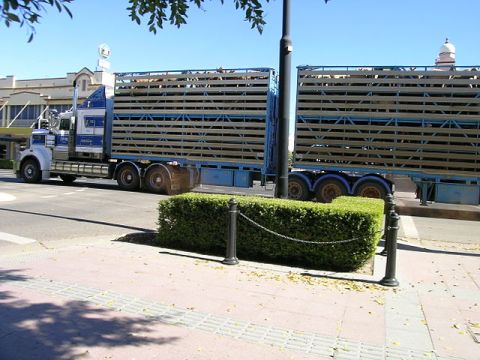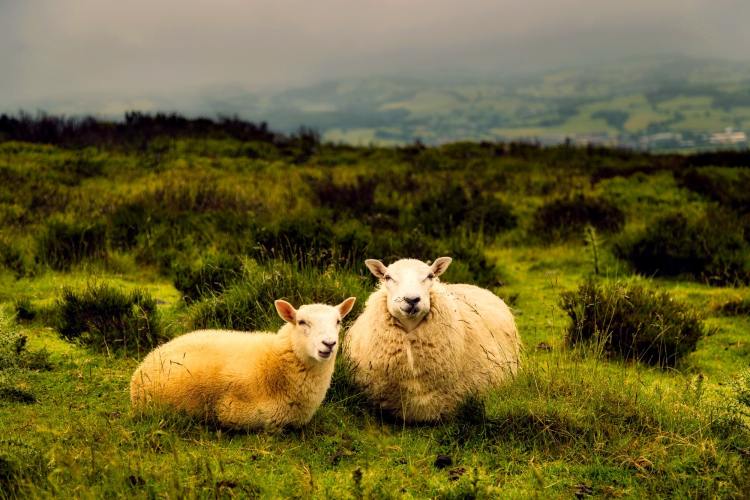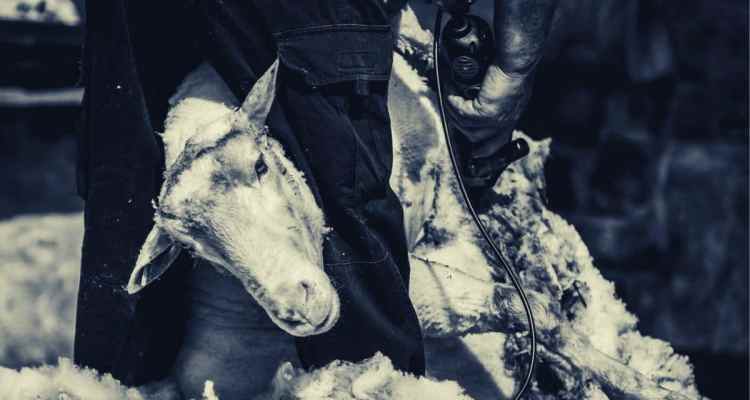We’ve always thought of Merino wool as a fantastic, next-to-skin fabric with immense benefits.
In fact, it’s one of the main reasons we started this site!
As people are so quick to claim Merino clothing’s performance qualities, they often turn a blind eye to the issues behind the scenes. We wanted to take a different approach by looking into how clothing companies manufacture their apparel and treat the Merino sheep.
So, for now, let’s forget about the comforts of our favorite clothing and ask a simple question: Is Merino wool ethical?
We’ve done a deep dive into the world of fashion, farming, and everything in between — all to bring you the ethics behind wool harvesting. As you are the end-consumer, it’s your choices that will ultimately make an ethical difference.
Certifications and Organizations to Know:
- ZQ Merino: A wool certification focusing on all aspects of production, including sustainability, ethics, and traceability.
- Responsible Wool Standard (RWS): Industry tool used for best farming practices.
- CSIRO: The Commonwealth Scientific and Industrial Research Organization of Australia.
- AWI: The Australian Wool Innovation hub by woolgrowers and industry professionals.
Merino Wool Ethics: The Shearing Process
Shearing a sheep hurts no more than getting a haircut.
Just like us, Merinos have skinfolds throughout their body. And if the shearer doesn’t heed caution or stretch them out, they could knick or cut the sheep badly.
Luckily, there are standard practices that most shearers follow.
Although the shearing process itself may not be harmful, there have been records of farmers and shepherds mistreating their sheep during the gathering process. It’s a rare occurrence, but an occurrence nonetheless.
What is being done about it…
As our society shifts to more ethical practices, the wool industry and many companies have gathered together to form the ZQ standard for ethical wool production.
While this standard covers a wide range of sustainable and ethical practices, when it comes to the treatment of sheep, they ensure five fundamental freedoms:
- Given the ability to eat and drink as they please (Free from Thirst)
- Able to roam in open pastures with plenty of acreages (Free to Live Naturally)
- Provided with proper shelter in extreme environments (Free from Discomfort)
- No instances of unnecessary stress (Free from Distress)
- Consistent flock monitoring for health issues (Free from Disease)
Our Stance
Merino sheep must live a happy, care-free life — end of story.
The ZQ standard does a great job of ensuring that Merino wool is sourced from farmers who adhere to ethical practices.
While the program is relatively new, you can check out our full write-up on ZQ Merino here.
Merino Wool Ethics: Mulesing
As you can imagine, Merino sheep can be pretty dirty, especially around their behind. They have a large fleece that sometimes feces, urine, and other contaminants stick to, leaving them prone to infection.
One of the top parasites that affect these sheep is known as flystrike. Not only does flystrike affect the quality of wool, but it can be lethal to the sheep.
To combat flystrike, many farmers have accepted the ethically-ambiguous practice of mulesing. They surgically cut off wool-bearing skin around the sheep’s buttocks. After that, scar tissue forms, and wool no longer grows in that spot. In turn, reducing the chance of fecal matter adhering to the sheep’s fleece.
Thus, reducing the likelihood of flystrike.
Although, as you can imagine, physically cutting the skin off sheep can be extremely painful for the animal. While this reduces the chances of flystrike, it causes much pain to the sheep.
The Australian Wool Industry (AWI) was set to phase out mulesing in 2010. Although, they quickly changed their stance after facing backlash from many sheep farmers. Even though they recently announced another industry push to reduce mulesing, their perspective is that farmers’ right to control their own flock’s health and hygiene.
Other Countries – like New Zealand – have implemented strict laws in favor of animal welfare, which ban mulesing altogether.
Animal rights organizations have deemed the process inhumane, and many companies have come out against mulesing. Subsequently, PETA ran an ad campaign in 2004 pressuring companies like Abercrombie & Fitch and others to vow only to use mulesing-free wool.
What is being done about it…
Several companies have come out publicly in their stance against mulesing and even source exclusively 100% mulesing-free Merino wool. That is to say, the law of supply and demand holds.
The hopes are that if more corporations take an ethical stand against animal abuse, the need for ethically sourced Merino wool will increase. Hopefully, we can phase out the mulesing process altogether.
On top of that, there have been scientific developments to reduce harm to the sheep but still reap mulesing’s benefits. These practices include insecticides, biological engineering, topical protein treatments, and a particular liquid nitrogen therapy known as ‘steining.’
Headway is being made in genetic testing and breeding to create flystrike-resistant Merino strains. The breeding in itself has its own ethical considerations, but we will get to shortly.
Our Stance
Overall, we stand with the many companies and animal rights organizations that believe this practice is unethical.
It’s crucial for you as a consumer to understand your favorite Merino wool companies’ sourcing methods, as ultimately, you hold power whether mulesing continues or not.
If you take a stand and purchase mulesing-free Merino, more companies will follow suit to ban the sourcing of their wool from farmers who use this practice.
Merino Wool Ethics: Live Transportation of Sheep
Not only does Australia export about a quarter world’s wool, but they also ship living Merino sheep around the globe. The live transportation of sheep can cause unnecessary stress on the animal.
On top of that, sheep in different parts of the world have other characteristics that allow them to thrive in specific environments.
For example, Merino sheep in colder climates tend to have a thicker fleece to protect against harsh weather conditions. If transported to a warmer climate, these sheep may have issues when it comes to temperature regulation.
The other side to the ethics behind live transportation is the possible environmental benefits. Suppose the source of Merino wool is closer to the processing plant and garment factories. In that case, there will be less need for transportation.
Thus, producing fewer emissions.

What is being done about it…
The ZQ standard has outlawed the transportation of live sheep. In addition, some countries have prohibited importing invasive sheep species and closely monitor flock size to prevent overgrazing.
We are also starting to see more companies — like Duckworth— who source their sheep locally instead of flying raw Merino wool across the globe.
Our Stance
It’s clear that there are both positive and negative effects of the transportation of livestock across country lines. Therefore, we believe that each situation needs to be looked at independently of each other.
The ZQ standard helps out with this, but you, as the consumer, should understand each company’s sourcing practices to better gauge your decisions.
Merino Wool Ethics: Genetic Modification

Before we get into the details of genetic modification, we need to look at the idea of selective breeding. The Merino sheep are only one breed, but different sheep strains have been created over the years due to selective breeding.
Breeders will take ewes and rams of desirable qualities and mate them in hopes that these qualities get passed down to their offspring. Furthermore, this process has been used for centuries with plants and animals alike.
For example, if you want to grow more giant tomatoes, plant the biggest tomatoes’ seeds from the previous crop yield.
The goal of genetic modification is akin to those of selective breeding, but the process is faster. Instead of waiting years, or even decades, to identify sheep with desirable traits, scientists can identify specific genes within different Merinos strains using genome technology. They can isolate the good genes and create a new bloodline with those desirable results like wool fineness, fleece yield, and even disease resistance.
The main issue is that genetically-modified Merino may experience adverse side effects in the future. This is because gene replication is not always successful and could lead to other biological problems for the sheep. There have been whole herds of sheep that have perished in the past due to a specific genetic mutation.
To take a deeper dive into ethics, you should understand more about the science behind breeding. So, here are some of the typical studies on Merino sheep’s genetic modifications.
Lambing Rate
Scientists are using genetic testing to improve the lambing rate (birthing rate). The more lambs per ewe; the more wool is available. Thus, breeders created the Booroola Merino in the mid-20th century for this specific trait. The American Society of Animal Science also published a complete genetic analysis on the production rate in Merinos as it had to do with this type of selective breeding.
Fleece Production
Not only does fleece weight improve a sheep’s profitability, but so does their wool’s fineness. A 2008 study in the Journal of Animal Production Science looks into the possibility of genetic selection for fleece production.
Environmental Adaptation
As they are raised all over the world, Merino sheep need to survive in different climates. While they are already incredibly adaptive animals, genetic modification allows them to thrive in specific environments. The Journal of Genetics Selection Evolution looked into Merino sheep’s overall genome and how they have adapted to varying global environments.
Disease Resistance
As previously mentioned, Merino sheep are susceptible to diseases like flystrike, footrot, and other parasitic infections. John Karlsson, a veterinary researcher and expert, conducted a complete study about the breeding for Merino sheep resistance in Australia.
Dual-Purpose
Many Merino sheep are too small to be profitable for meat production. However, recent genetic testing has improved the dual-purpose (wool and meat) efficacy of individual Merino strains. A 2009 study in the Journal for Animal Genetic Resources Information looked into Merino’s various genetic modifications, including meat production.
What is being done about it…
There are a variety of scientific studies published about the diverse genetic makeup of the Merino breed. However, it’s an iffy subject as some experts believe that genetic modification enhances certain sheep’s survival.
In contrast, others believe that it’s over-accelerating the natural selective breeding process, which may leave certain strains more susceptible to disease and suffering.
If you are concerned about the genetic modification of Merinos, make sure to check with the specific company about their sourcing procedures or contact your country’s Merino sheep association.
Our Stance
Genetic modification and selective breeding of Merino sheep are inevitable:
- Disease will always be prevalent.
- Adaptation is needed to adjust to changing environments.
- Bloodline susceptibility is not going to change overnight.
The important part is for geneticists and farmers to achieve proper genetic modification animal welfare — not profits — at the forefront.
Merino Wool Ethics: Worker’s Rights

Even though much of the raw Merino wool is farmed in Australia, most garment manufacturers are located in Southeast Asian countries like China, Vietnam, Laos, and Cambodia. Over two-thirds of Australian Merino wool is exported to China for top-making and finishing.
Historically, these countries don’t have the best track record of providing their workers with suitable labor conditions.
You’ve probably heard the term sweatshop before, and some clothing manufacturers ignore workers’ rights, honoring their costs instead.
Some brands contract their garment-making to factories that ignore international worker safety standards, pay them unlivable wages, and expose them to dangerous conditions. This human neglect leads to lower production costs, thus increasing profits.
What is being done about it…
Another industry practice, the Responsible Wool Standard, focuses on animal welfare and the strict ethics behind the Merino wool production process. They emphasize traceability and transparency, all the way from the farm to your closet.
Some clothing companies like Icebreaker have taken it a step further, releasing detailed transparency reports of their supply chain, manufacturing process, and more.
Our Stance
We tend to favor companies that provide transparency throughout their manufacturing process. The consumer should understand how their garment gets made to gauge their buying considerations better. Moreover, the more people that can survive on a livable wage, the better our global society becomes.
In other words, it should always be people before profits, not the other way around.
Merino Wool Ethics: The Environment

Sheep are part of nature’s process: all they need is sun, water, and grass. Merino wool in itself is a renewable material and is also biodegradable (after 12 months).
However, there are some concerns as the fiber becomes more popular in the garment industry. There are the increased greenhouse gas emissions from processing mills, garment manufacturers, and the increased number of sheep themselves.
As we previously mentioned, overgrazing is problematic. These massive herds of sheep can sometimes disrupt their grazing area’s biodiversity. There are also high transportation costs, usage concerns, and many other factors associated with Merino wool’s sustainability.
What is being done about it…
The ZQ standard takes this issue very seriously. It requires growers to provide a Land Environmental Plan to sustain their pastures.
Also, many Merino wool companies cater to eco-minded consumers. They have been investing money to reduce overgrazing, lower transportation costs, reduce manufacturing byproducts, and more.
Our Stance
The ethical, environmental impact of Merino wool is much less than that of other garment industry fabrics. We believe that sustainability is essential to combat the effects of climate change. So, any company that focuses on sustainability efforts has a good standing in our book.
If you’d like to learn more about sustainability and environmental issues, you can read our complete Merino sustainability guide.
Final Merino Wool Ethical Considerations
In summary, the ethics behind Merino wool clothing come down to you as the consumer.
It would be best if you were encouraging companies to become more ethical by doing your research. You should study transparency reports and learn the various industry standards. Also, read up on ZQ Merino and understand what it means for your clothing to be ‘mulesing-free.’
For more Merino wool facts, information, and your favorite performance apparel, make sure to follow me on Instagram @merinowoolgear.

